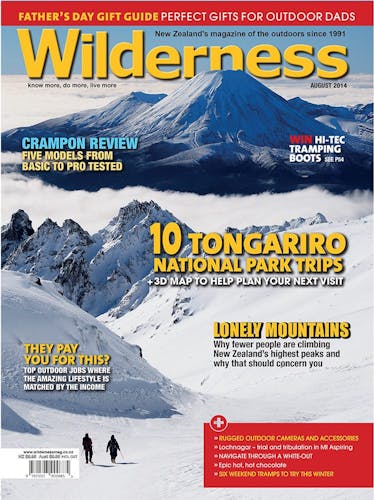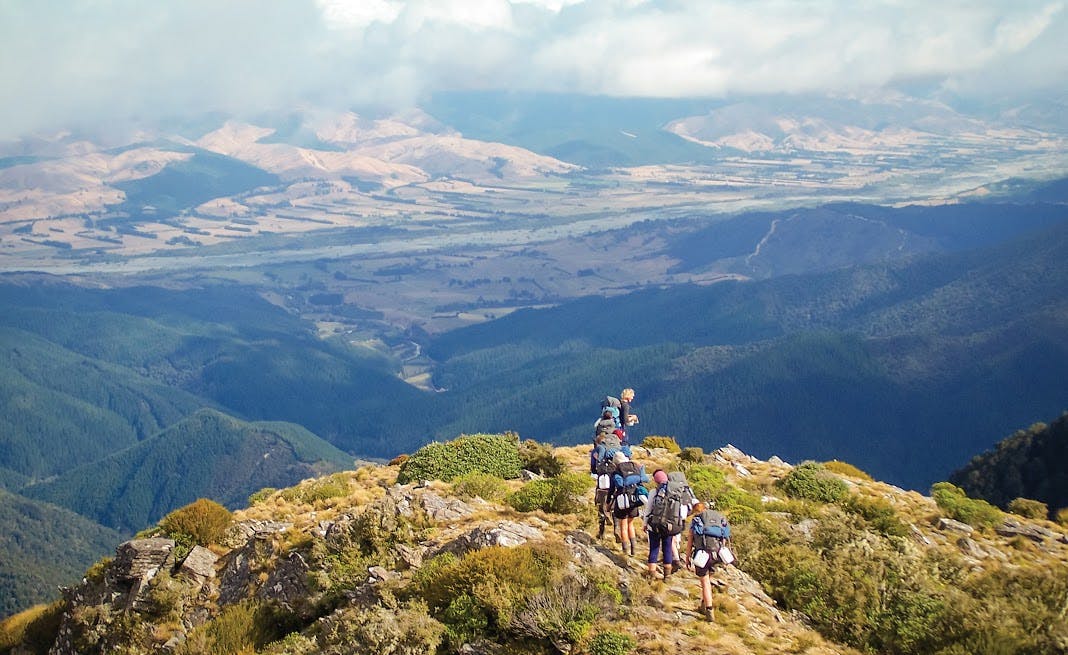Green credentials and an awareness of sustainability are now an important part of gaining outdoor qualifications, writes Tania Seward
Think of an outdoor education experience and it’s the practical pursuits that come to mind: white water kayaking, rock climbing, high ropes. You’re less likely to think of school kids planting vegetable gardens, university students restoring a wetland habitat or an outdoor education centre purchasing eco-friendly dishwashing detergent.
It might come as some surprise then to learn that sustainability now goes hand-in-hand with traditional outdoor education activities. The concept of sustainability is simple enough: every facet of our modern lives depends on the natural environment to some extent. In a classroom context, sustainability is all about raising awareness that we’re using up the planet’s resources faster than we can replace them.
But what’s all that got to do with outdoor education? According to the tertiary sector, quite a lot.
Prior to 2008, CPIT’s flagship outdoor education programme was its Bachelor of Adventure Recreation and Outdoor Education. While both sustainability and environmental education were included in the programme, there was a growing feeling among students and staff that the degree name didn’t accurately reflect the holistic nature of the programme.
“Between 2008 and 2010 we spent about $45,000 on research,” says programme head Dr David Irwin. “As a result of that research, and the changing perspectives of both students and staff, we renamed the degree to Sustainability and Outdoor Education.”
The increased visibility of the sustainability portion of the programme has resulted in an increased profile for CPIT both domestically and internationally. Irwin regularly gets phone calls from overseas institutions wanting to know more about how the course combines outdoor education and sustainability. The course has also played host to a number of foreign exchange students. But for all the changes that have taken place, the bare bones of the programme remain largely unchanged.
“It’s not significantly less practical,” Irwin says. “And there’s not significantly more environmental education or sustainability. We still spend a lot of time in the outdoors but there’s more of a critical edge to it now. We put a lot of energy into trying to get students to think how they can use the outdoors to further the agenda of sustainability.”
That critical edge is also evident at Tai Poutini Polytechnic. Programme head Dave Ritchie invests a significant amount of time ensuring his students have a solid understanding of how [their actions impact the world around them]. “It’s really important that our graduates can have an intelligent conversation around these ideas,” he says. “They need to be capable of sparking ideas in other people, because that’s how you make a difference.”
Irwin agrees that the role of the tertiary sector is to produce graduates who will change the outdoor industry for the better. “For the last 60 years outdoor education has embraced the model of personal development and building resilience,” he says. “But now we have different pivotal driving forces, such as climate change, overpopulation and species extinction. We have to be able to respond to that.”
In the five years since CPIT’s programme was renamed, reaction from the outdoor industry has been largely positive. “Employers are ringing up, wanting us to help them grapple with ideas around sustainable practice,” says Irwin. “We also have graduates employed in the field, either developing sustainability curriculum in schools or working on operational practices for the private sector.”
For Tai Poutini Polytechnic, tourism is providing significant opportunities to promote the message of sustainability. “Many of our graduates go into frontline tourism,” says Ritchie. “Businesses want their guides to have interpretation skills, intercultural and environmental knowledge. Being able to put those skills together is incredibly valuable.”
The reaction from students has also been positive. “Students are often initially focussed on the hard skills,” says Ritchie. “But by the time they get into the second year of the course, they start to realise that they’re in this for a different reason. They’re also realising that what their employers want is the ability to look after people, to educate people, and leave them with a meaningful message.”
Increasingly, it is schools that are providing the opportunities to integrate sustainability into outdoor education programmes. “Schools are under increasing financial pressure, which means fewer long-distance trips and other low-ratio activities,” says Irwin. “The concern with risk and safety has become pervasive in schools, and it’s taking a huge toll. Schools are moving towards place-based outdoor education activities. As a result, we’re seeing increasing demand from outdoor education teachers for resources for incorporating sustainability into what were once pursuits-based subjects.”
Adds Ritchie: “There’s a shift taking place within outdoor instruction in New Zealand. We have to design experiences for people that are accessible and meaningful. That doesn’t mean scaring people, or taking them somewhere that’s too hard – it means [giving them a sense of belonging] and giving them information to take away.”
So have we seen the end of traditional outdoor education activities like week-long tramps and a day spent on a low ropes course? Not necessarily, says Irwin. “We just have to ask ourselves, what is it that we want our kids to be learning, and what do they need to equip themselves for the future?”







